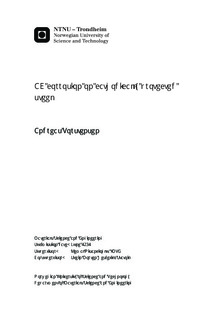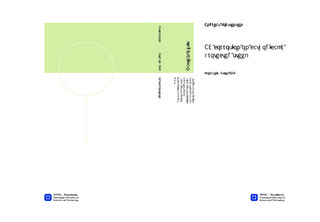| dc.contributor.advisor | Nisancioglu, Kemal | nb_NO |
| dc.contributor.advisor | Hesjevik, Svein Morten | nb_NO |
| dc.contributor.author | Torstensen, Andreas | nb_NO |
| dc.date.accessioned | 2014-12-19T13:26:50Z | |
| dc.date.available | 2014-12-19T13:26:50Z | |
| dc.date.created | 2012-12-03 | nb_NO |
| dc.date.issued | 2012 | nb_NO |
| dc.identifier | 573666 | nb_NO |
| dc.identifier | ntnudaim:8129 | nb_NO |
| dc.identifier.uri | http://hdl.handle.net/11250/249180 | |
| dc.description.abstract | This report deals with the effect of alternating current on cathodically protected steel. AC corrosion has become relevant in the offshore industry due to the introduction of the direct electric heating system (DEH). The principle with DEH is to prevent wax solidification inside pipelines by heating them up with alternating current. This can give rise to AC corrosion.DC current densities, AC current densities and DC potential have been measured for steel samples under cathodic protection with applied AC voltage. Weight loss measurements were done of both steel and sacrificial anode samples after the experiments. There have also been focused on the corrosion kinetics of AlZnIn by plotting polarization curves and potential measurements over time with applied AC current.The weight loss measurements have shown that carbon steel is protected against AC corrosion for AC current densities lower than 1300 A/m^{2}. All steel samples had corrosion rate lower than 0,1 mm/year up to this value. SEM investigation showed that no pitting corrosion occurred at any of the steel surfaces. The corrosion rate of AlZnIn increased with increasing AC current density up to 300 - 500 A/m^{2}. At higher AC current density, the sacrificial anodes became passive which resulted in decreased protection current and corrosion rate. Polarization curves of AlZnIn have also shown large resistance when AC is introduced which is probably due to surface coverings.Study of the surface morphology of AlZnIn have shown that more localized corrosion occurs with increasing AC current. At 500 A/m^{2} pitting corrosion occurred at the whole surface and the pits became deeper with increasing AC. This resulted in decreased efficiency of the sacrificial anode and consequently reduced DC current density and corrosion rate of the sacrificial anode.Potential and current measurements have shown that the galvanic potential of steel and AlZnIn became more electropositive with increasing AC current density. It is believed that this is due to more localized corrosion with increasing AC voltage and consequently lowering of the anode/cathode ratio. This will force the potential to more anodic values. The initial DC current density increased with increasing AC voltage for all samples but the passivation of sacrificial anode resulted in high reduction rate with time. Polarization curves of AlZnIn showed that the corrosion potential decreased and the corrosion current increased when AC was introduced. Within the samples exposed to AC there were no significant difference in corrosion potential and corrosion current. The polarization curves of all samples that were exposed to AC were characterized by high ohmic resistance which was due to hydrogen evolution and formation of corrosion products at the surface. | nb_NO |
| dc.language | eng | nb_NO |
| dc.publisher | Institutt for materialteknologi | nb_NO |
| dc.subject | ntnudaim:8129 | no_NO |
| dc.subject | MTMT Materialteknologi | no_NO |
| dc.subject | Materialutvikling og -bruk | no_NO |
| dc.title | AC corrosion on cathodically protected steel | nb_NO |
| dc.type | Master thesis | nb_NO |
| dc.source.pagenumber | 83 | nb_NO |
| dc.contributor.department | Norges teknisk-naturvitenskapelige universitet, Fakultet for naturvitenskap og teknologi, Institutt for materialteknologi | nb_NO |

